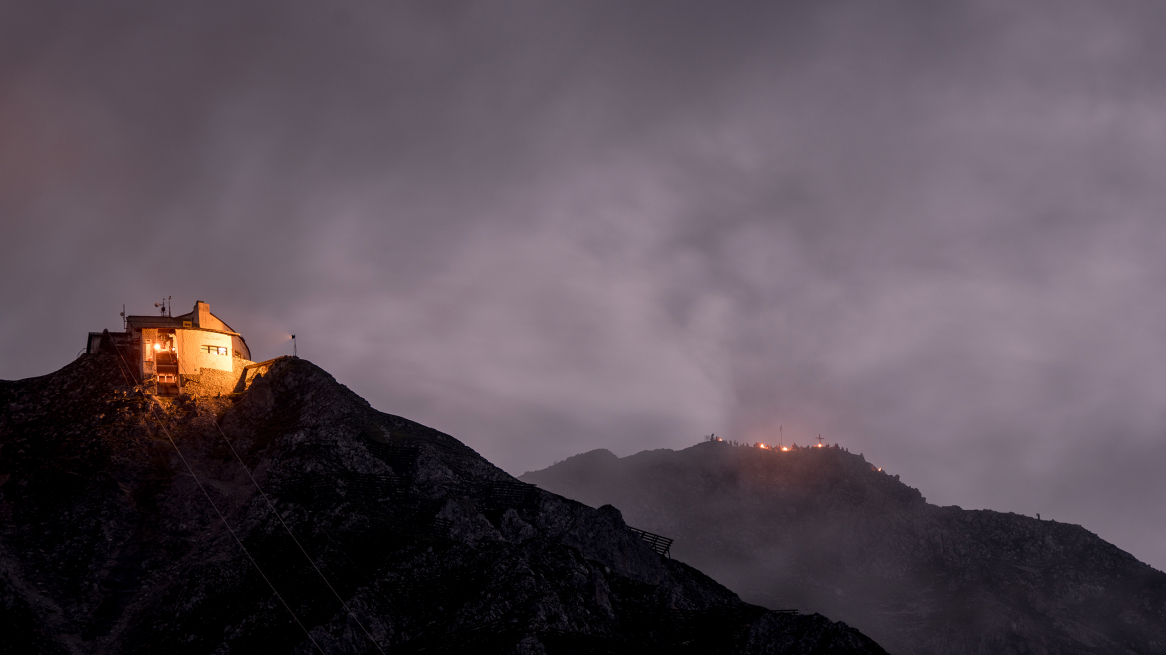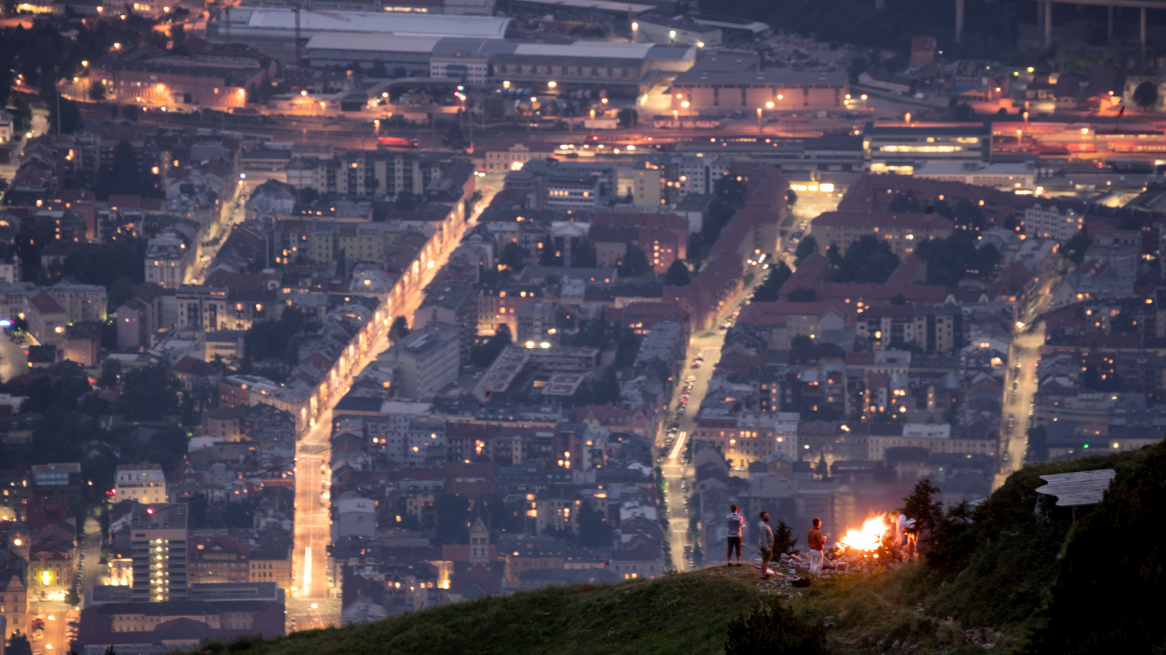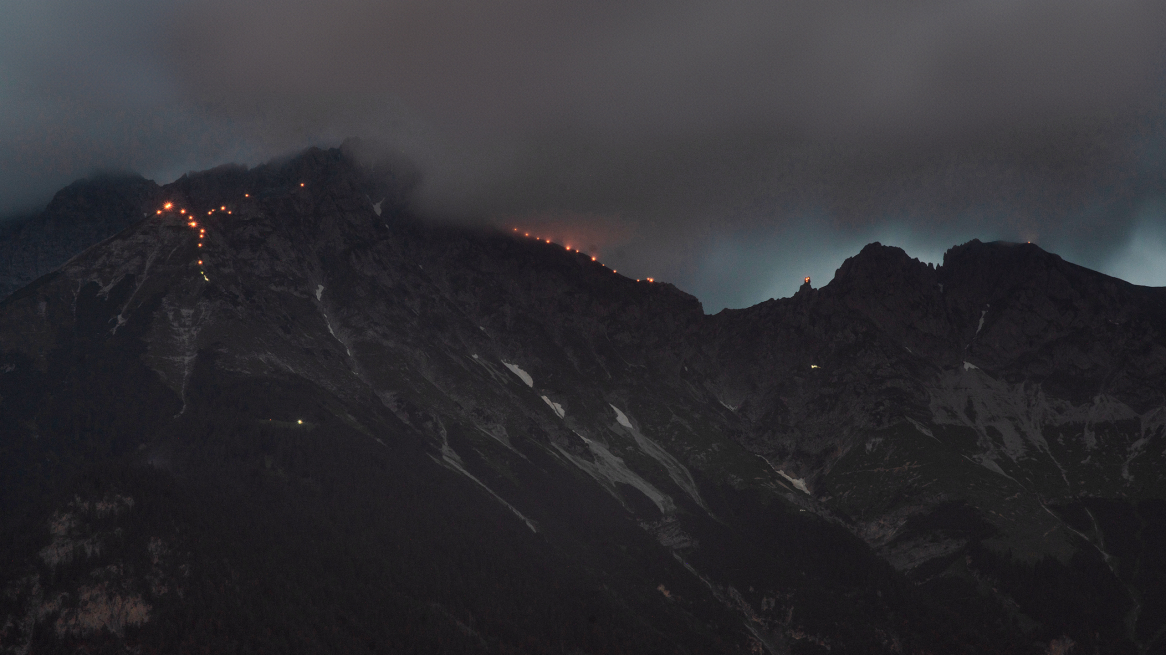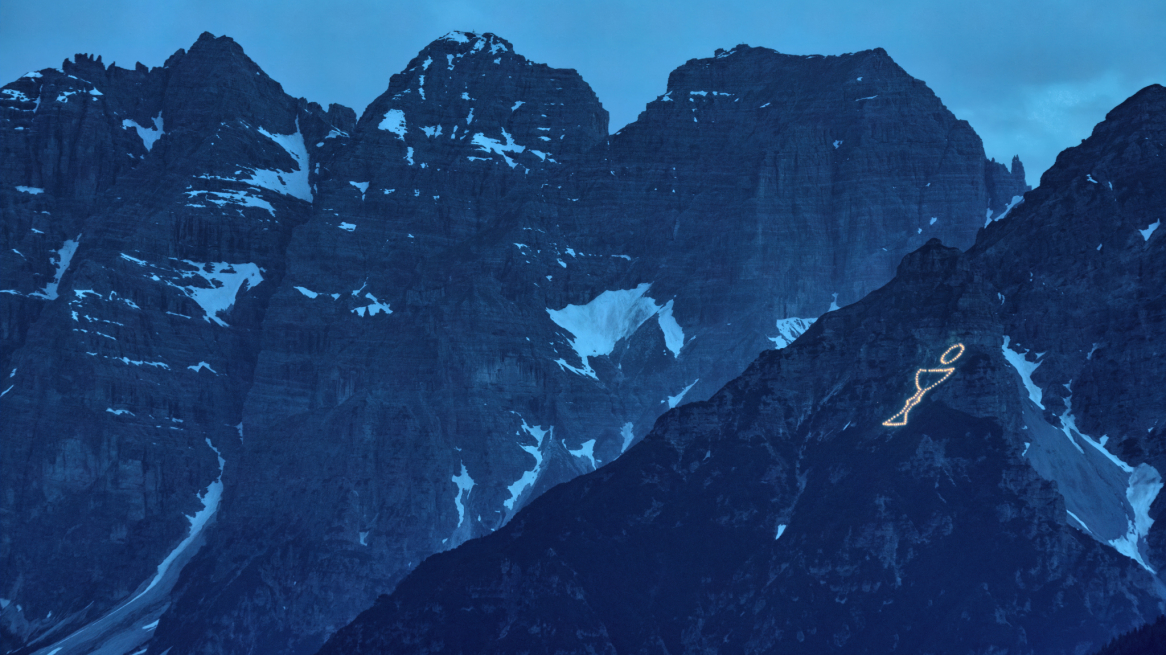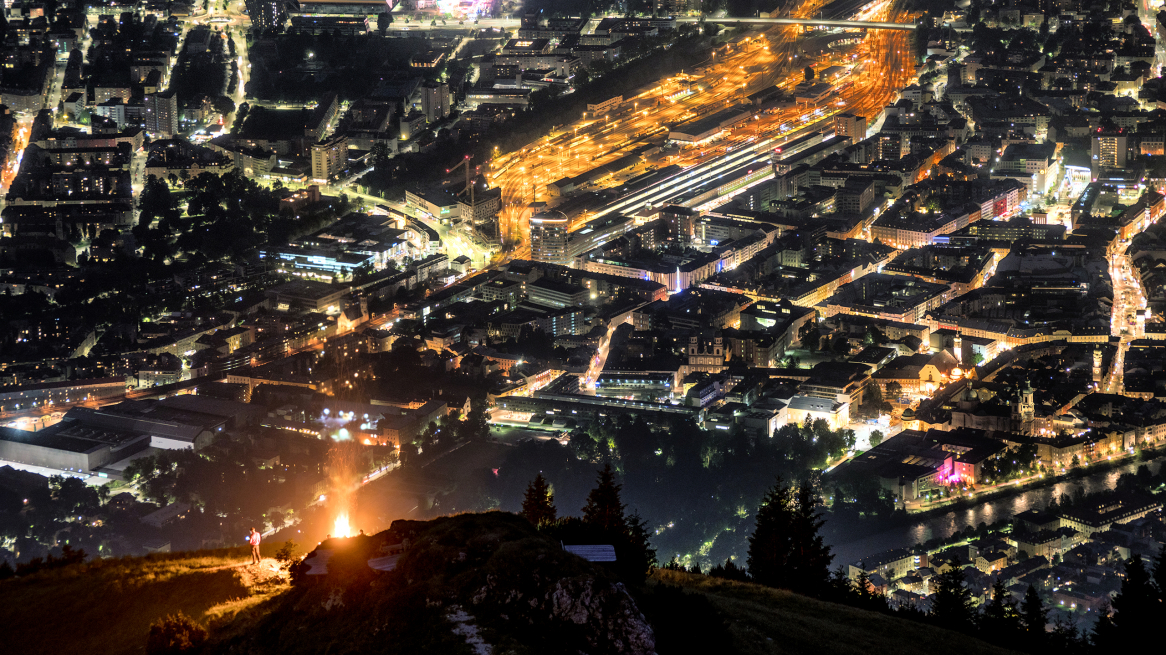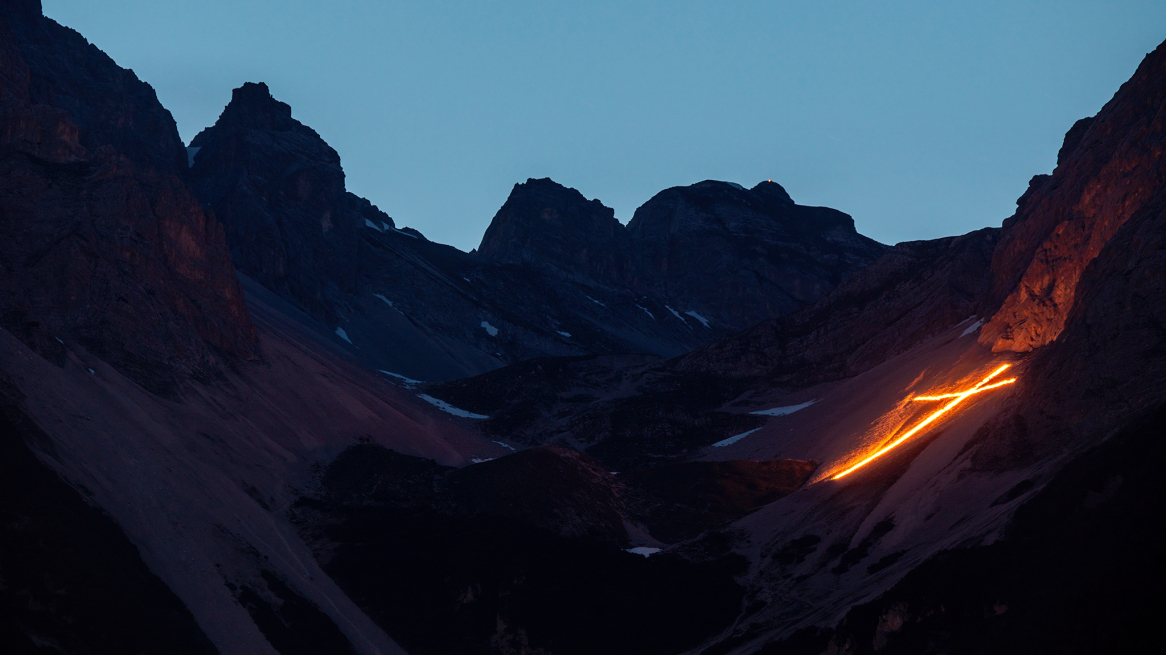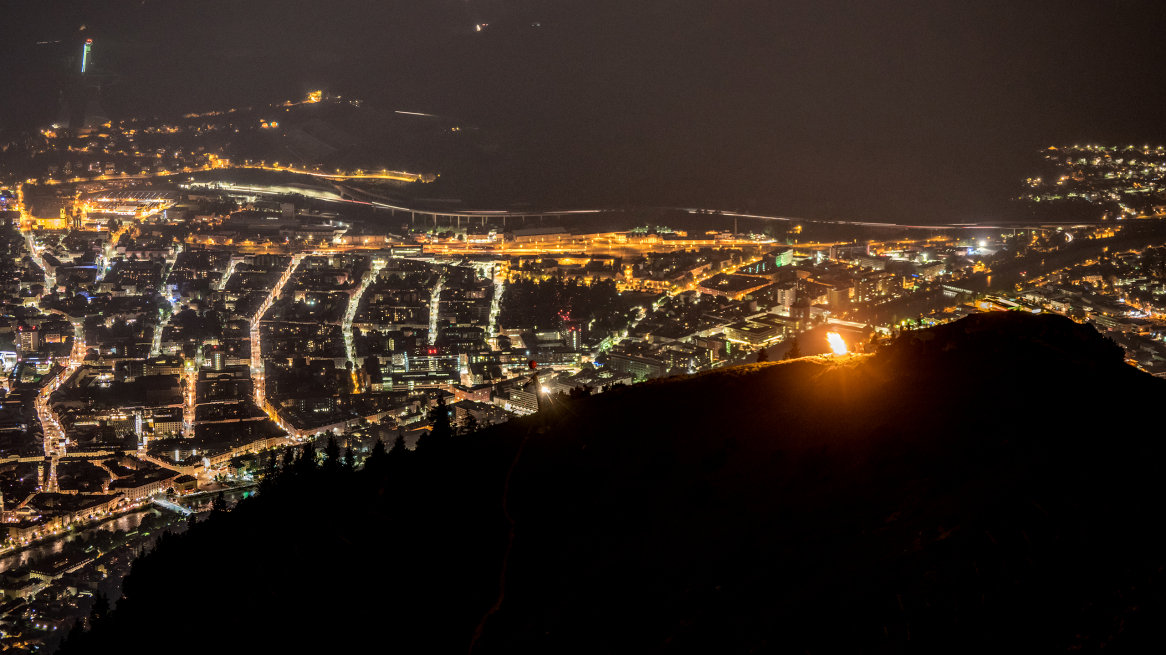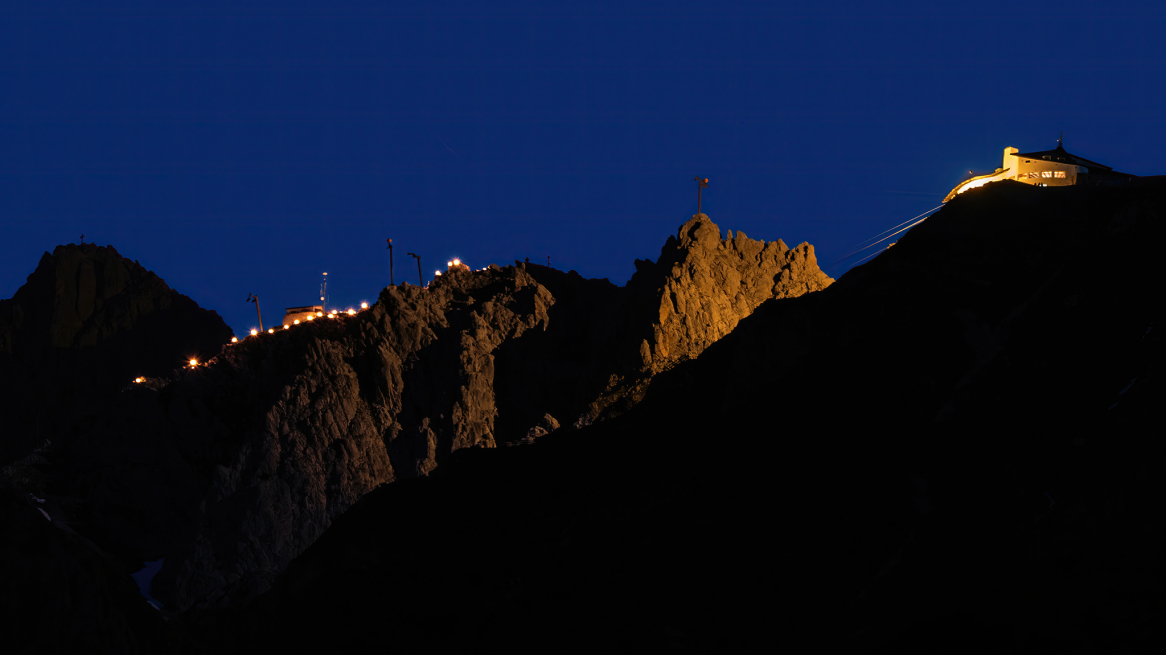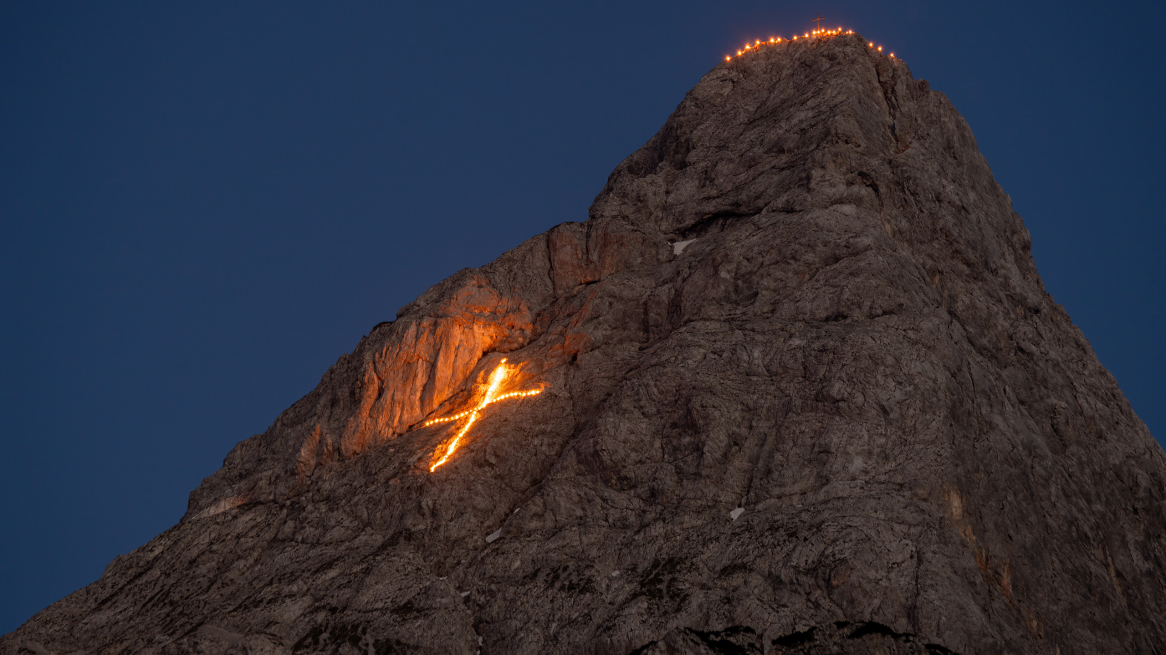
The mountains around Innsbruck are not only known for their breathtaking beauty, but also for their living traditions. Two of the most important customs that light up the summer nights in the Innsbruck area are the Sacred Heart of Jesus bonfires and the solstice bonfires. Both festivals have deeply rooted cultural and religious meanings and offer a spectacular experience for locals and visitors alike.
Sacred Heart bonfires: a sign of faith and loyalty
The tradition of the Sacred Heart of Jesus bonfires dates back to 1796. Faced with the threat of French troops during the Coalition Wars, the Tyroleans vowed to consecrate their land to the Sacred Heart of Jesus if they were spared from invasion. Since then, this covenant has been renewed every year on Sacred Heart Sunday, the third Sunday after Pentecost, with the lighting of fires on the mountains.
On the night of Sacred Heart Sunday, countless fires light up the peaks around Innsbruck. The flames often form symbols such as crosses, hearts or the Christ monogram "IHS". These fiery symbols are an expression of faith and gratitude as well as a strong community experience for those involved.
Solstice bonfires: a festival to celebrate the summer solstice
Solstice fires, also known as St. John's fires, have their origins in pre-Christian, pagan customs to celebrate the summer solstice. With the longest day of the year on June 21, this festival marks the middle of the year and the peak of the sun's power. The fires were traditionally intended to drive away evil spirits and ensure the fertility of fields and livestock.
Nowadays, the solstice fires in the Innsbruck area are a social event that attracts locals and tourists alike. People gather on the alpine pastures and mountain meadows to celebrate together, listen to music and enjoy the mystical atmosphere of the blazing fires. The experience is often complemented by folk music, dancing and regional specialties.
Similarities and differences
Although both traditions involve the lighting of fires in the mountains, they differ in their origins and meanings. While the Sacred Heart mountain bonfire is strongly rooted in Catholic tradition and is an expression of faith and gratitude, the solstice bonfires have pagan roots and celebrate nature and the solstice.
However, a common element is the sense of community and togetherness that both festivals convey. Residents and visitors to the region come together to share these special moments, and the fires on the mountains symbolize a connection between heaven and earth, man and nature.
How is it done? What needs to be considered?
I spoke to Jakob Auer, an employee of Innsbruck Tourismus in Telfs. He told me some interesting facts about the Sacred Heart bonfire. Jakob has been responsible for the Sacred Heart bonfires in Telfs, which are organized by the rifle company as an association, for four years.
"Preparations start about a month in advance," says Jakob. "This includes ordering the torches, notifying the fire department, raising the funds for the torches and putting together the group that builds and lights the bonfire," he adds.
In response to my question about how the places for the mountain fires are determined, Jakob replies: "My group from the Telfs rifle company and I have been using the same places for our Sacred Heart fires for many decades: the south side of the Hohe Munde at around 1,800 meters and the Arzberg at around 950 meters above sea level. For the selected sites, it is important that the field for the fire is oriented towards the community in the valley so that the catchment area of spectators and admirers is as large as possible. In addition, the slope should be steep enough and ideally protected from the wind to optimize the burning time of the torches."
It goes without saying that an increased level of safety is required here. Jakob explains: "In terms of safety, it is important to monitor the weather closely in advance and decide whether the ascent is possible on the planned day. If you are already on the mountain, you should know how to behave in the event of hail or thunderstorms. In addition, every participant must be sure-footed and free from giddiness and have the right equipment and clothing with them. Local knowledge is also an advantage, as you have to find the right way back down into the valley in complete darkness, despite using a headlamp." One consequence of this: "Due to the high risk of falling, it is unfortunately not possible to experience the mountain fire directly on site. However, I invite everyone to admire the Sacred Heart bonfires from the valley."
As the Sacred Heart fire has such a long tradition in Tyrol, I was naturally interested in how it is passed on and how the traditions are maintained. Jakob gave me the following answer: "This tradition is passed on intensively to the next generation. For two years now, we have had a fire on the Arzberg especially for our youngsters, which is more easily accessible and therefore ideal for young people to gain their first experience of mountain fires. For us adults, the south side of the Hohe Munde is planned. The ascent of around 800 vertical meters, including easy climbing in the third degree, is very demanding. With the additional weight of the torches, only very mountain-savvy and sure-footed people can install this fire on the mountain."
So if you are in the Telfs area on Sunday, June 9, you should definitely pay attention to the two points mentioned and enjoy the Sacred Heart of Jesus fire.
Solstice celebration on the Nordkette: an experience for all the senses
On June 22, 2024, Nordkette will once again be all about the solstice. The restaurant Seegrube and the Top of Innsbruck will spoil you with culinary delights, accompanied by DJ sounds and traditional music. This festive atmosphere is framed by the traditional midsummer bonfires, which are coordinated by the Sonnwendring and organized by local clubs.
A special torchlight hike for children starts at 8:45 pm at the children's playground at Seegrube. A storyteller accompanies the hike and brings traditional legends and stories to whisk the little ones away into a magical world.
Operating times
- Last descent on the Hafelekarbahn: 11 pm
- Last descent Seegrubenbahn: 11:30 pm
The regular tariffs of Innsbrucker Nordkettenbahnen apply. The Freizeitticket Tirol is also valid! With the Welcome Card plus (for stays of 3 nights or more), visitors receive a 20% discount on the card.
Lively and unique
The Sacred Heart of Jesus bonfires and midsummer bonfires in the Innsbruck area are more than just impressive displays of light. They are living traditions that reflect the culture and history of the Tyrol region. Both festivals offer a unique opportunity to experience the spiritual and natural beauty of this area and to take part in centuries-old customs that still light up people's hearts today.
Whether you are a visitor or a local, participating in these festivals will give you unforgettable impressions and a deep understanding of Tyrol's rich cultural landscape. And incidentally, they also make great photo opportunities for photography enthusiasts.
All photos © Danijel Jovanovic Photography - www.djphotography.at
Instagram: @danijeljovanovicphotography
Facebook: Danijel Jovanovic Photography
Rate this article
Show me the location on the map
Professional photographer from Innsbruck, nature enthusiast and animal lover.
Similar articles
Beautiful and good: the noble product world Anyone in Tyrol looking for high-quality regional products in attractive…
What do you do when the highest elevation near your home town is only around 150 meters?…
"If the bee disappears from the earth, humans will only have four years to live. No more…
The first time I met Isobel Cope, I was halfway through presenting my radio show Sensations in…

